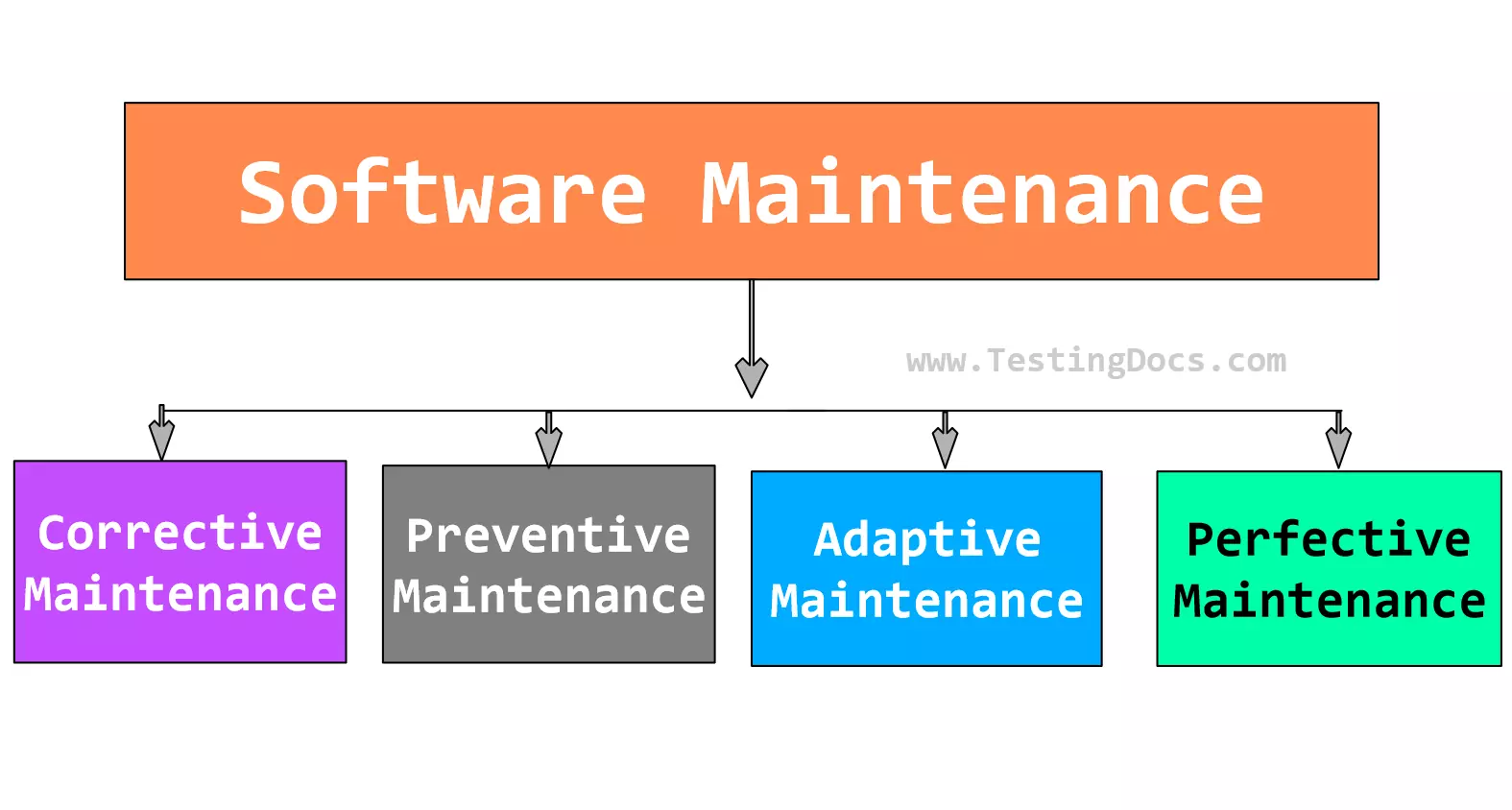Software Maintenance
Overview
Software maintenance is the process of modifying a software system that is already in use in the production environment. This phase is an essential phase of the Software Development Life Cycle (SDLC) and involves various activities to ensure that the software remains functional, secure, and updated.
Types of Software Maintenance
There are several types of software maintenance. There are as follows:
- Corrective Maintenance
- Preventive Maintenance
- Adaptive Maintenance
- Perfective Maintenance
Corrective Maintenance
Corrective maintenance refers to addressing software defects, bugs, or errors. It ensures that the software operates as intended and that any issues discovered during its use are promptly resolved. Defects can occur due to errors in design, logic, or coding. Design errors happen when the alterations made to the software are incorrect or incomplete.
Preventive Maintenance
Preventive maintenance involves proactive tasks like code refactoring, security updates, and performance tuning to prevent future issues.

Adaptive maintenance
Adaptive maintenance is modifying software to adapt to changes in the external environment. This environment encompasses all external conditions and influences that act upon the software, such as business rules, government policies, work patterns, and software and hardware operating platforms. Any changes to this environment may necessitate a corresponding modification to the software. This includes updates to ensure compatibility with new hardware or operating systems, regulation changes, or user requirements changes.
Perfective Maintenance
Perfective maintenance focuses on improving software performance, user experience, and overall quality. This may involve enhancements, optimizations, and feature additions to meet evolving user needs. When software becomes functional, end users often try new use cases beyond its original scope, with enhancements to existing functionality and improved workflows.
Software maintenance is critical for ensuring that software remains reliable and continues to meet the needs of its users. Improper maintenance can deteriorate software quality, security vulnerabilities, and user dissatisfaction. It’s often an ongoing process that can extend throughout the entire lifespan of the software.
—
Software Testing Tutorials:





